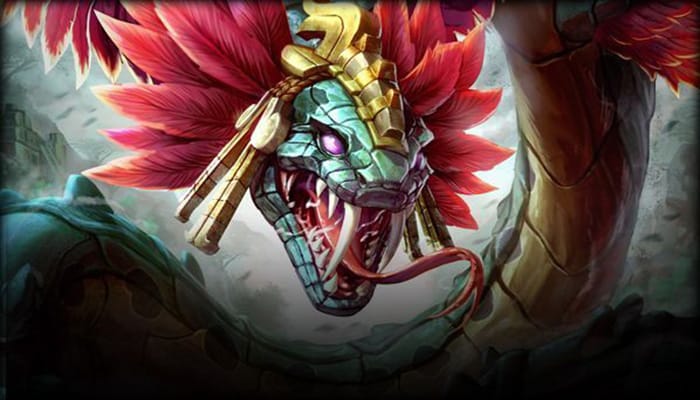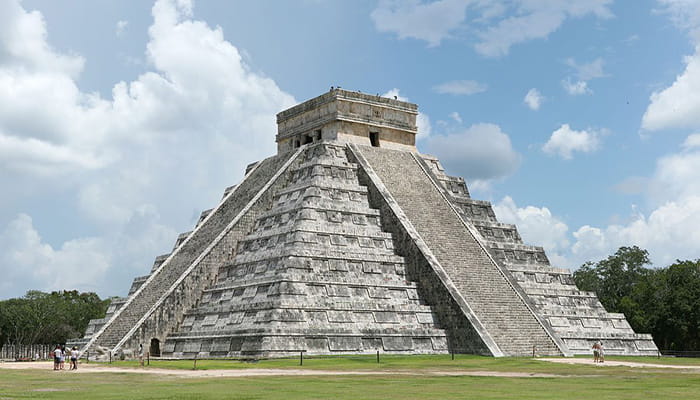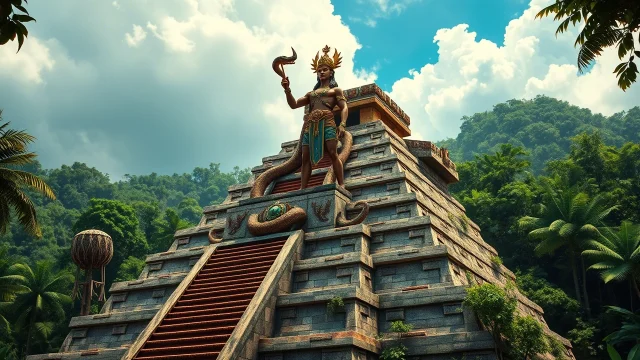In Mayan mythology, Kukulcan was the almighty serpent god worshipped by the Mayans. While little information remains about the legends and mythology of Kukulcan, due to the tragic destruction of the Mayan codices by Spanish conquistadors and Catholic priests, depictions of this god are found in surviving Mayan architecture and remain a lasting legacy into our present day.
Kukulcan, the serpent god of the Maya, remains a legacy of a once-powerful civilization.

1. The Feathered Serpent Deity
While Kukulcan was a deity worshipped by the Maya, his concept, that is, a feathered serpent deity, was not unique to Maya civilization. He was known as Quetzalcoatl to the Aztecs and Gukumatz to the Kiche (a Maya group located in modern Guatemala).
The idea of a feathered serpent god in pre-Columbian Mesoamerican religion dates back to the Olmecs, the oldest known major civilization in Mexico, which flourished around the 15th to 5th centuries BC.
The feathered serpent god is also known to have been worshipped by the people of Teotihuacan, as evidenced by the prominent representation of this deity in the Temple of the Feathered Serpent, one of the main pyramids at the ancient site.
- The myth of the feathered serpent: revealing the true message behind the feathered serpent
- The Rise of Quetzalcoatl: From Feathered Serpent to Creator God
2. Spreading the Cult of the Serpent God
While the feathered serpent deity may have been worshipped as early as the Olmec period, it was the Toltecs who made his cult pan-Mesoamerican. It was this pre-Columbian civilization, which dominated what is now central Mexico between the 10th and 12th centuries AD, that spread the cult of this god as they conquered their neighbors.
It is likely that the Toltecs brought this god to the lands of the Maya, where he became known as Kukulcan. Some scholars believe that the great Maya city of Chichén Itzá had been conquered by the Toltecs, while others believe that it was founded by exiled Toltec nobles.
In any case, the Toltec influence can be felt in Chichén Itzá, as similarities have been established between the architectural style of the city and that of Tollan (known today as Tula), the Toltec capital.
3. The Temple of Kukulcan
The feathered serpent deity was also introduced to the Maya, which is most evident in the main Maya city of Chichén Itzá, in the building known as El Castillo or the Temple of Kukulcan. This is a stepped pyramid that dominates the landscape of Chichén Itzá, which is obvious based on the representations of this god in its architecture, particularly the stone carvings of Kukulcan’s head at the base of the pyramid’s stairs.

One of the most interesting aspects of this temple is its astronomical alignment. During the spring and fall equinoxes, the sun’s rays interact with the edges of the pyramid’s steps to cast a shadow on the side of the structure’s staircase. This shadow creates the illusion of a giant snake descending the pyramid. Kukulcan’s head at the base of the staircase undoubtedly enhances the effect of this illusion.
4. Lost Mythology
Unfortunately, very little is known about the myths surrounding Kukulcan, and scholars are unsure whether they resemble those the Aztecs told about Quetzalcoatl. One of the Aztec myths about Quetzalcoatl claims that this god had been a priest-king of Tollan, but Tezcatlipoca, the god of night, exiled him.

In one version of the myth, Quetzalcóatl left the city, boarded a raft made of snakes, and sailed eastward. Some have suggested that this legend may have had a historical basis, and that Quetzalcóatl’s journey east may correspond to the arrival of the Toltecs on the Yucatan Peninsula, which may be a common legend shared by Kukulcan and Quetzalcóatl.

